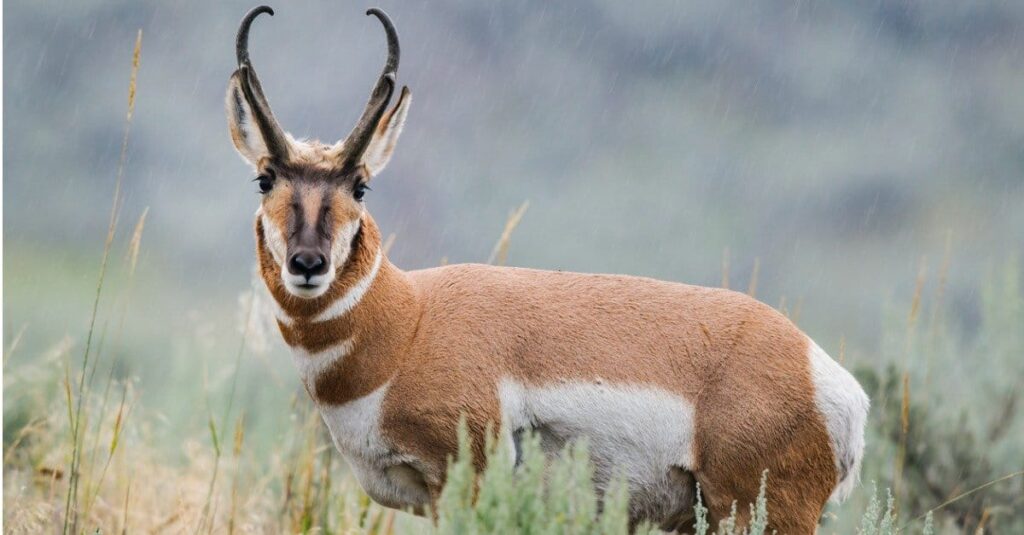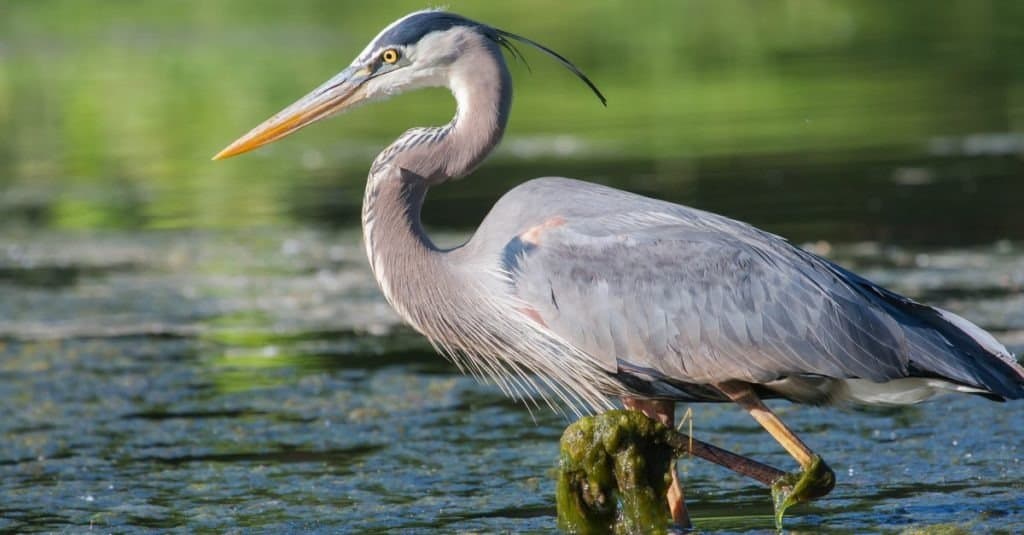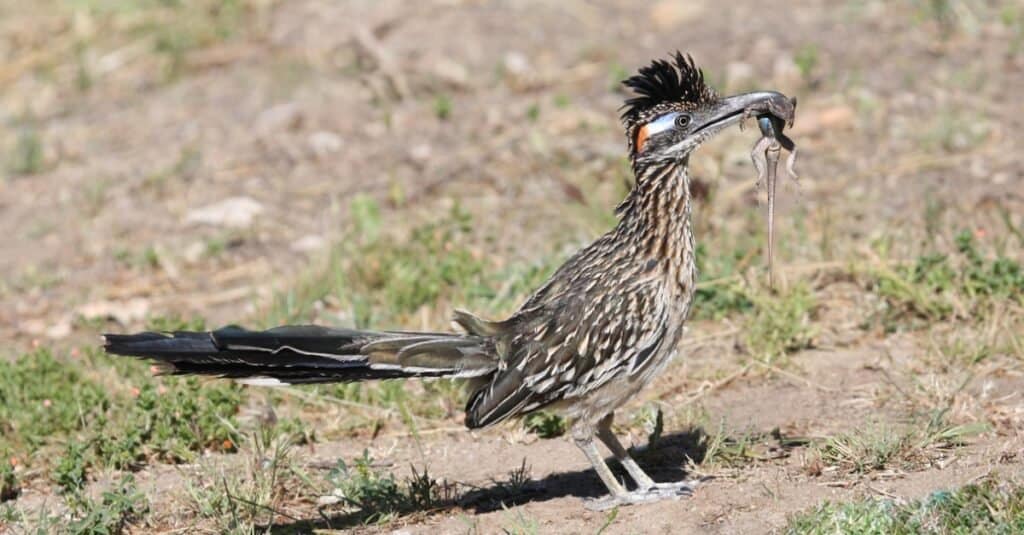Arizona has diverse ecosystems, including deserts, grasslands, woodlands, forests, and tundra. And while it may be dry and scorching most of the year, they have four distinct seasons which allow many animal species to thrive. Have you ever wondered what the speediest creatures in an arid environment would be? Surprisingly, many are prey animals who adapted to get away quickly. Discover the fastest animals in Arizona, including where you can find them and what makes them so swift.
1. Pronghorn Antelope – 60 mph

Pronghorns can attain a speed of 60 mph!
©BGSmith/Shutterstock.com
The pronghorn antelope is a unique mammal indigenous to Western and Central North America. It resides primarily in Arizona’s northern plains and southern grasslands, where at least 10,000 roam freely. Pronghorns can reach a maximum speed of 60 miles per hour! They may not be as fast as a cheetah, but they can maintain their momentum for longer. And the reason for their intense speed? They adapted special features over time to evade predators, like the North American cheetah that went extinct 10,000 years ago. They have long, powerful legs and enlarged nostrils that help them intake oxygen more efficiently.
2. Antelope Jackrabbit – 45 mph

Jackrabbits are agile and fast.
©Vincent Pro Photo/Shutterstock.com
The antelope jackrabbit is a fast North American hare native to Mexico and Southwestern United States desert regions. You can find them in Southern Arizona in a small portion of the Sonoran Desert. These rabbits get their name from the fast-running antelope and can run up to 45 miles per hour. Look for them as they dash across the desert landscape, flashing their white undersides. They are likely the fastest in their genus, with long legs and fast-twitch muscles, which give them exceptional speed and acceleration.
3. Coyote – 43 mph

Reaching 43 mph, coyotes are fast and dangerous.
©Mircea Costina/Shutterstock.com
Coyotes are wild canines found throughout the country. They are one of the most common animals in Arizona and occur in a wide range of habitats, including rural, suburban, and urban areas. They can reach 43 miles per hour, much faster than dogs and humans. Their speed and fearlessness make them dangerous, but it’s best to scare them off than to run away. Coyotes have adapted to reach impressive speeds because their prey, such as rabbits, are speedy and can easily outrun them. But can the swift coyote keep up with the cunning roadrunner? Continue reading to find out!
4. Javelina – 35 mph

Javelina can run as fast as 35 mph.
©Dennis W Donohue/Shutterstock.com
The javelina is a medium-sized pig-like mammal that looks similar to a wild boar. It is native to the Southwestern United States down to Central South America. You can find it throughout Central and Southern Arizona and as far north as Flagstaff. The largest population of wild javelinas occurs in the Picacho Mountains, but they can also inhabit desert regions. Javelinas only have three toes on each hind foot, but they can run as fast as 35 miles per hour! They can only maintain this speed for short distances and typically jet out quickly when they feel threatened or afraid. This peccary is quite muscular and uses its powerful hooves to propel forward.
5. White-Tailed Deer – 30 mph

Whitetail deer can run at 30 mph.
©iStock.com/Lynn_Bystrom
The white-tailed deer is a medium-sized deer native to North, Central, and South America. Arizona has a subspecies of whitetail called Coues, and you can commonly find them in the state’s southeastern mountains. When startled or evading predators, deer can run 30 miles per hour and swim 15 mph, much faster than any Olympic swimmer and sprinter. They are capable of great bursts of speed due to their more significant proportion of twitch muscle fibers. Their bodies are also light and built to outrun predators like bears and cougars (and humans).
6. Great Blue Heron – 30 mph

Great blue herons can reach a speed of 30 mph when cruising.
©Joseph Scott Photography/Shutterstock.com
The great blue heron is a large, majestic, wading bird native to North and Central America. Blue herons live throughout Arizona, and you can find them near river edges, lakes, and wetlands. Despite their size, they can be hard to miss due to their silent, still postures. But it’s a thrilling sight when they take off from the water. These graceful birds can reach 30 miles per hour when cruising, flapping their broad wings, and curving their necks in an S-shape. They typically move slowly and elegantly but make lightning-fast grabs when hunting their prey, such as fish and small rodents.
7. Greater Roadrunner – 25 mph

Roadrunners can reach a speed of 25 mph.
©iStock.com/NaturesDisplay
Greater roadrunners are long-legged birds from the cuckoo family native to the United States and Mexico. These famous birds inhabit the deserts, brush, and grasslands throughout most of Arizona. You can often find them on the ground or sitting on low perches. The greater roadrunner can reach speeds of 25 miles per hour, successfully evading many predators. However, he is no match for the Wiley coyote, which clocks in over 40 mph! These birds are unique because they don’t show their speed through flight but rather on foot. They use their long, slender legs to quickly cover a lot of ground.
Up Next:
- The Fastest Animals In The World (Faster Than A Ferrari!?)
- Discover the Fastest Animals in New Hampshire
- Discover the Fastest Animals in North Dakota
- Discover the Fastest Animals in Oregon
The photo featured at the top of this post is © BGSmith/Shutterstock.com
Thank you for reading! Have some feedback for us? Contact the AZ Animals editorial team.







